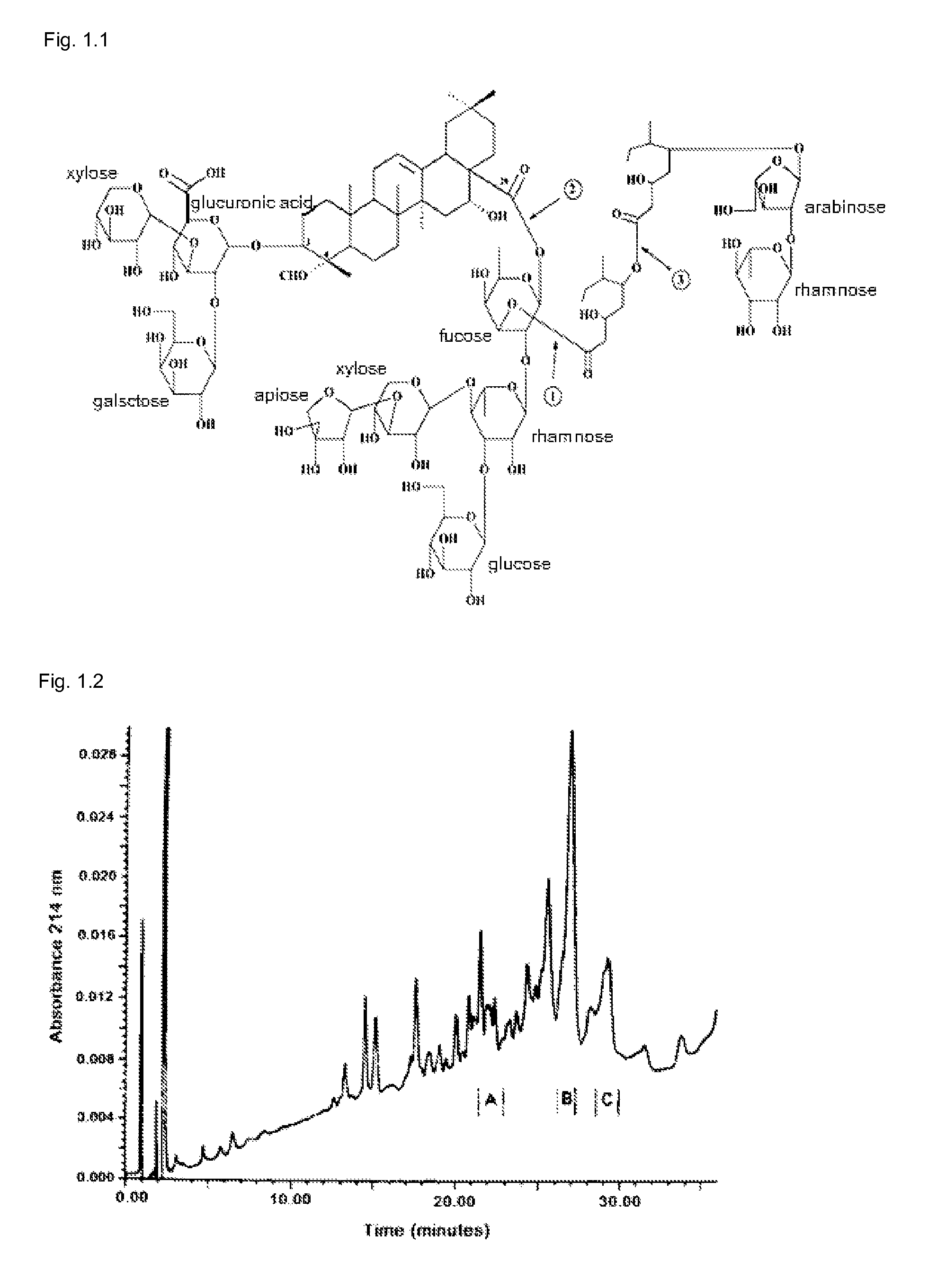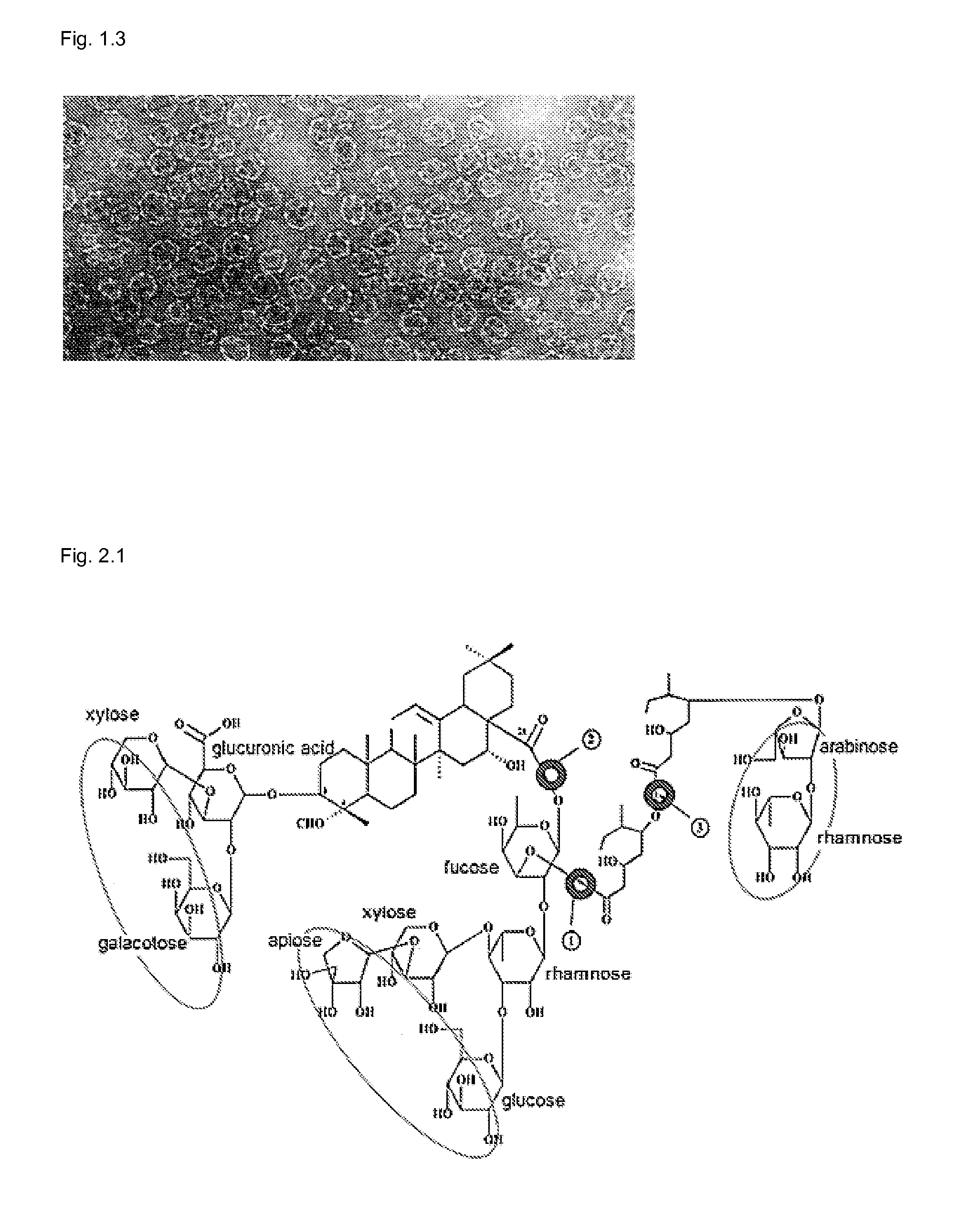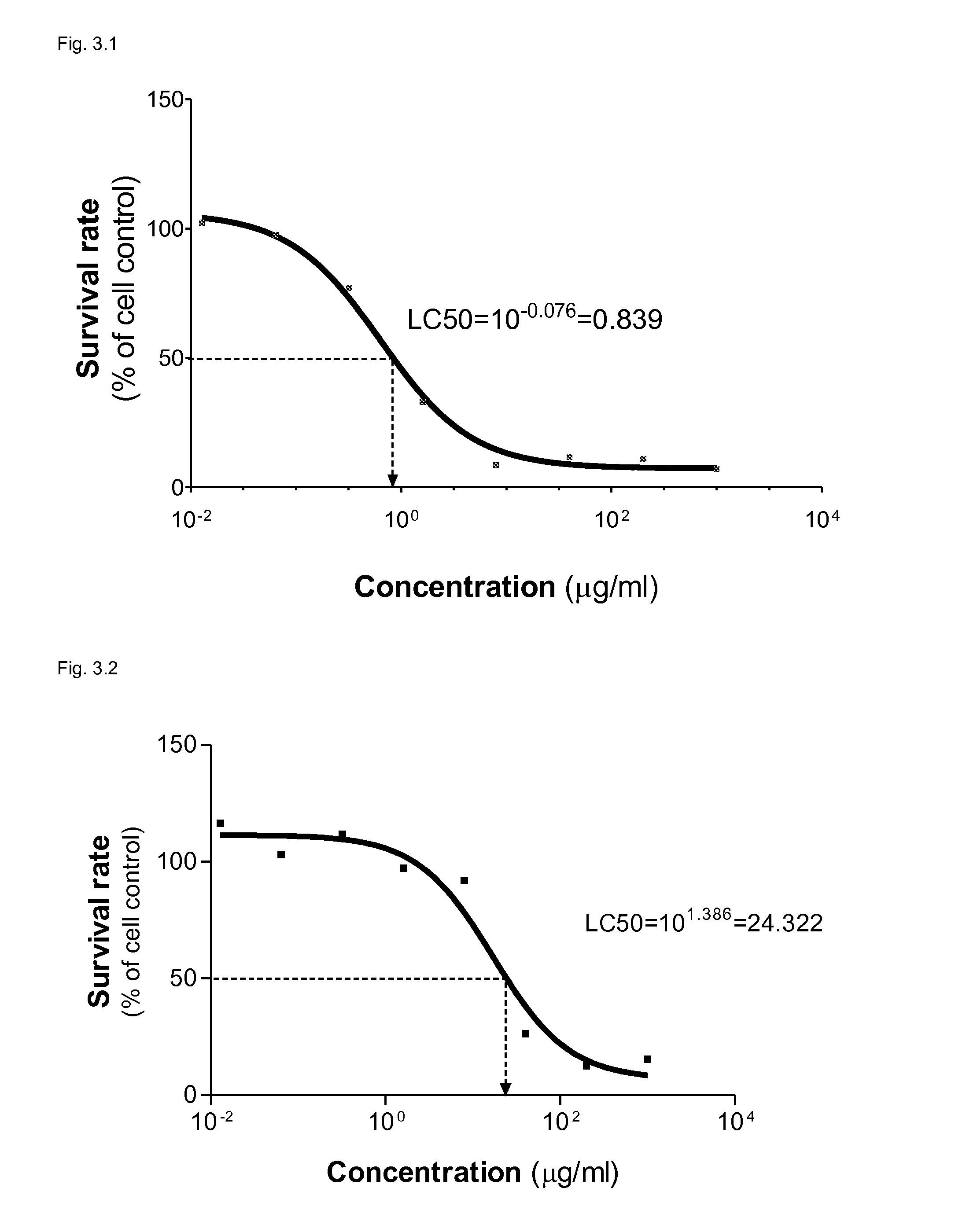Use of lipid containing particles comprising Quillaja saponins for the treatment of cancer
a technology of quillaja saponin and lipid containing particles, which is applied in the direction of cancer antigen ingredients, plant growth regulators, biocide, etc., can solve the problems of inability to develop useful cancer drugs, crude or fractionated saponins as such, and inability to realistically treat free saponins, etc., to achieve high bioavailability, suppress and modulate immune responses, and inhibit the growth of tumour cells
- Summary
- Abstract
- Description
- Claims
- Application Information
AI Technical Summary
Benefits of technology
Problems solved by technology
Method used
Image
Examples
example 1
Formulation of KGI 1 (QHC), KGI 2 (703-matrix ISCOM), KGI 3 (all Quill A fractions including QHA through QHC) and BBE (QHA)
[0159]The structure of the quillaja saponin in illustrated in FIG. 1.1 showing that the QHA fraction is lacking an alkyl chain present in QHC. The KGI 1 particle is based on QHC in the right area marked in FIG. 1.2. This saponin fraction is more hydrophobic and more lytic than QHA being the basic saponin in BBE on the right area of reversed chromatography marked in FIG. 1.2.
[0160]KGI can be formulated from defined Quillaja saponin fractions or mixtures of several Quillaja saponin fractions. Thus, KGI 1 is made from QHC fraction, KGI 2 is made from a mixture of QHA (7 parts) and QHC (3 parts) and KGI 3 is a mixture of non-separated quillaja fractions. Also QHB can be turned into a KGI cancer killing particle. BBE is made from QHA. The proportions can be changed to tailor the desired properties of killing or less cytotoxic properties to emphasize differentiation p...
example 2
Lytic Effect on Red Blood Cells (RBC) and Nucleated Cells
[0163]It is well known that saponin has cell lytic effect and for this reason it has been tested as candidate for cancer treatment (Wang, Z. P. 2005). Quillaja saponin pattern after fractionation by HPLC is shown in FIG. 1.1. In the present invention, QHC used in formulations KGI 1, 2 and 3 particles is highly lytic due to the fatty acyl chain (FIG. 2.1). In contrast, QHA used in formulations BBE, KGI 2 and 3 particles lacks the fatty acyl chain and, therefore, it is virtually non-lytic. RBCs are used to measure the lytic effects of substances on its cell membrane causing a damage allowing the haemoglobin to leak out into the suspension fluid readily determined by spectrometry (see Materials and Methods). The method is sensitive and reproducible. The lytic effect of substances on the cell membranes of nucleated cells has to be tested by a different method. We have used Trypan blue staining. The free KGI have properties of sapo...
example 3
KGI 1 Selectively Kills Cancer Cells
[0172]This example demonstrates that KGI 1 particle selectively kills tumor cells over normal cells measured by the Alamar blue method. A malign monoblast cell line (U937) was selected as tumour cell for comparison with a normal cell i.e. monocyte derived dendritic cells (DCs) (See Materials and Methods). An active saponin component in KGI 1 is QHC (free KGI 1) isolated from commercially available Quill A, which is originating from the tree Quillaja saponaria Molina. Free KGI i.e. fraction QHC is highly hydrophobic as compared to the fraction QHA i.e. free BBE as shown in FIG. 3.1 (HPLC chromatogram of Quill A). The QHC differs from QHA by an alkyl chain lacking in QHA explaining the higher hydrophobicity of QHC and its lytic effect (FIG. 3.2).
[0173]The tumor cells: monoblast cell lines (THP-1, U937 and U-937-1) and the myeloma cell lines (LP-1 and Jurkat) obtained from the Academic hospital Uppsala, were exposed to KGI 1.
Results
[0174]KGI 1, formu...
PUM
| Property | Measurement | Unit |
|---|---|---|
| concentrations | aaaaa | aaaaa |
| time | aaaaa | aaaaa |
| time | aaaaa | aaaaa |
Abstract
Description
Claims
Application Information
 Login to View More
Login to View More - R&D
- Intellectual Property
- Life Sciences
- Materials
- Tech Scout
- Unparalleled Data Quality
- Higher Quality Content
- 60% Fewer Hallucinations
Browse by: Latest US Patents, China's latest patents, Technical Efficacy Thesaurus, Application Domain, Technology Topic, Popular Technical Reports.
© 2025 PatSnap. All rights reserved.Legal|Privacy policy|Modern Slavery Act Transparency Statement|Sitemap|About US| Contact US: help@patsnap.com



